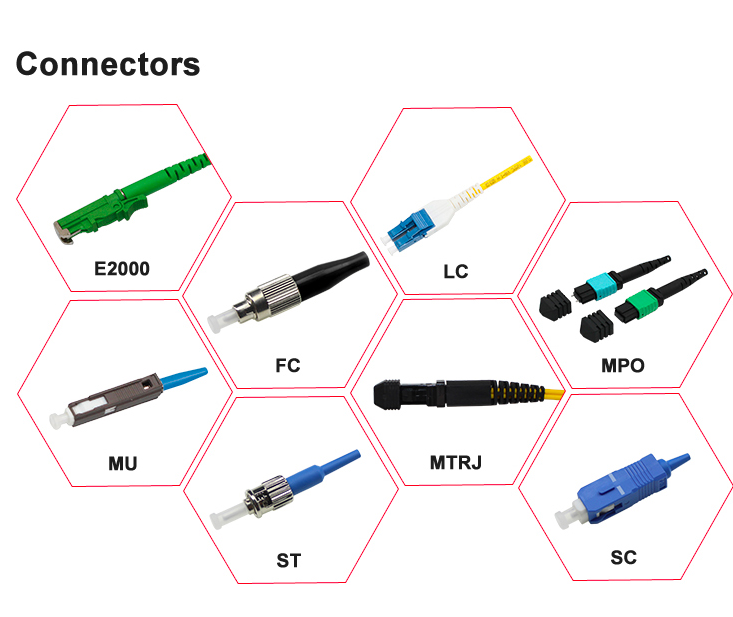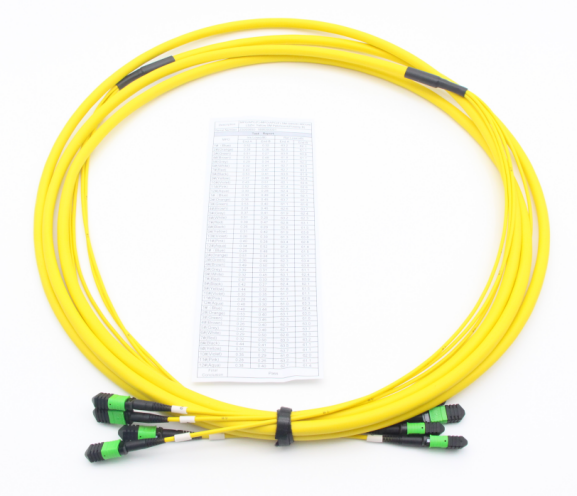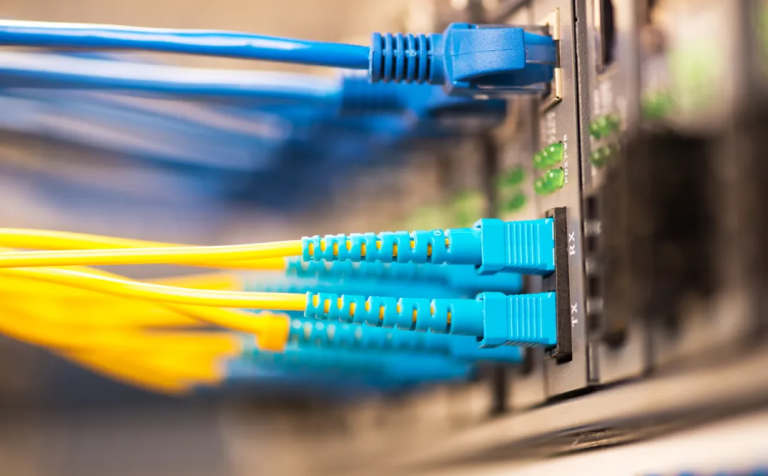Fiber optic networks consist of a wide range of components, and the connector is one of them since it plays a vital role. Similar to the installation of data centers and long-haul networks, indoor communications systems, the requirement to choose the appropriate type of connector of fiber optic connector to ensure signal integrity, speed, and long-term durability.
Yet, how many fiber optic connectors types do you actually know? Here is what we could do to break down the essentials and assist you in choosing an optimal solution to your needs.

What Are Fiber Optic Connectors?
It is a mechanical connection belonging to fiber optics that is used to introduce and match two fibers together to allow the conveyance of light. They have low insertion loss, low return loss, and long-term stability. However, different environments and applications call for specific types of connectors.
Most Popular Fiber Optic Connector Types
There are numerous types of connectors used in fiber networks today, and each one has specific advantages depending on your setup.
1. SC (Subscriber Connector)
The SC connector is one of the most widely used types for commercial networks. It features a push-pull locking mechanism, making it ideal for fast connections. It’s commonly used in datacom and telecom environments.
2. LC (Lucent Connector)
Known for its small form factor, the LC connector is perfect for high-density applications. It uses a latch locking system and is often seen in enterprise-level network environments and modern fiber patch panels.
3. FC (Ferrule Connector)
FC connectors feature a screw-on design that ensures a secure fit, making them ideal for settings with frequent movement or vibration. It’s commonly used in test equipment and industrial fiber installations.
4. ST (Straight Tip)
The ST connector uses a bayonet-style coupling and was once a popular choice in network infrastructure. Though slightly outdated, it’s still found in older installations.
5. MTP/MPO (Multi-fiber Push-On/Pull-off)
These are high-density connectors capable of handling 8, 12, or 24 fibers in a single ferrule. MTP/MPO connectors play a vital role in backbone infrastructure and data centers, offering high bandwidth capacity and excellent scalability.
You can explore our full selection of fiber optic connectors at OMCFTTH product page.
Choosing the Right Fiber Optic Connector Types
When choosing from the different fiber optic connector types, consider the following factors:
- Application Area:Is it for indoor structured cabling, outdoor FTTX, or data center backbone?
- Connector Density:For high-density spaces, LC or MTP connectors are ideal.
- Cable Type:Single-mode or multi-mode fiber may require different connector polishing and alignment.
- Mechanical Durability:FC connectors are better suited for harsh or high-vibration environments.
Why It Matters
Selecting an improper connector may result in contributing to a greater signal loss, weak network performance, and elevated overheads on maintenance. This is the reason why the knowledge of the different fiber optic connector types is critical to both engineers and IT technicians.
OMCFTTH Custom Solutions
At OMCFTTH, we go beyond providing fiber optic parts—we support you in creating more efficient and reliable networks. We offer:
- Custom-built connector assemblies
- Precision ferrule polishing
- Connector options with specific insertion and return loss tolerances
You can view and request customization via our full product lineup at OMCFTTH Products.
FAQs
Q: Can all fiber optic connectors be used interchangeably?
No. Various connectors are designed differently in shape and locking mechanism, and thus an adapter or a complementary interface is needed.
Q: Which connector is best for a small office network?
LC connectors are the best since they have a small form factor and are easy to use.
Q: Can I reuse fiber connectors?
In most cases, connectors are not designed for reuse once installed. However, mechanical connectors can be re-terminated if necessary.
Conclusion
It is important to understand the fiber optic connector types in the current networks to enable one to construct a reliable and future-proof network. The SC and LC connectors to the MPO/MTP connectors each have intended functions. In case you do not know what type fits your application best, OMCFTTH can also help you with expert advice and custom solutions.
Explore our complete range and request support here: https://www.omcftth.com/products/


